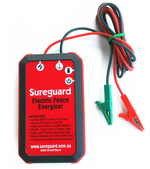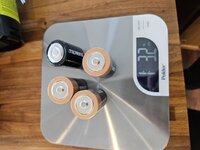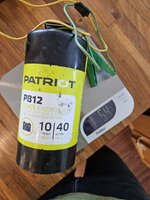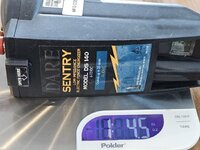You are using an out of date browser. It may not display this or other websites correctly.
You should upgrade or use an alternative browser.
You should upgrade or use an alternative browser.
Best Electric fence charger for ultralight backcountry setup
- Thread starter Guswild
- Start date
- Thread Starter
- #3
bisblue thanks for that! That is one I have been considering. I’m looking for the most compact and light weight option. Do you happen to know the dimensions and weight?
I’ll be using it to contain my two horses while in the backcountry. They already have a reverence for hot wire so they will not likely test it.
I’ll be using it to contain my two horses while in the backcountry. They already have a reverence for hot wire so they will not likely test it.
Legend
WKR
- Joined
- Jun 13, 2017
- Messages
- 1,025
I think I run the patriot pb12. It runs on 4 d batteries which are really the substantial weight component. The rest of the parts are super light. Batteries last and really long time as long as there isn't a short (like grass touching the wires).Hi all!
For those of you out there using electric fence setups could you weigh in on your favorite fence chargers. Name brand, size/weight, and whether they’re solar or battery charged.
Just make sure you run a hot/ground/hot wire pattern. Three wires work and 5 is better.
Bob b
FNG
- Joined
- Mar 14, 2016
- Messages
- 39
I have used the speedrite and one of the bigger patriot chargers. They both work fine the speedrite is lighter and only takes 2 batteries. They both have some cheap plastic parts which I haven’t broke but I have thought about taking a backup for longer trips.
The speedrite an20 runs on 2 D's, and will probably work for your horses if you arent to worried about them. I stopped using mine because i could hold onto it without even flinching and the shock was very minimal. . I upgraded to the speedrite an90 and am much happier with it overall. It is bigger, but I also use it on my bear fence around camp and needed something that actually packs a punch. Ive heard good things about the gallagher s12, just never used one. Gallgher also makes a D battery type charger as well.
rayporter
WKR
a ski rope winder is very handy to rewind the wire easily so you can save it without tangles.
- Thread Starter
- #10
I think I run the patriot pb12. It runs on 4 d batteries which are really the substantial weight component. The rest of the parts are super light. Batteries last and really long time as long as there isn't a short (like grass touching the wires).
Just make sure you run a hot/ground/hot wire pattern. Three wires work and 5 is better.
Thanks legend! Any chance you know the weight of the charger with batteries? Trying to decide between solar and battery powered and weight will be a big deciding factor.
- Thread Starter
- #11
Great tip! I use the 6 strand 2mm poly wire. Do you have a feel for about how many feet I might get loaded onto the ski rope winder?a ski rope winder is very handy to rewind the wire easily so you can save it without tangles.
I also saw a dive reel recommended somewhere but I’m not sure I’d get enough line on it.
- Thread Starter
- #12
Really appreciate the feedback on the chargers everyone. Most of the time I can get away with just stringing a single strand of white rope (not hot) around my boys and they’ll stay put. But i’m usually around. I’d like to get somethin with just a little shock so I could have a little more piece of mind leaving them in their enclosure possibly overnight or when I’m out scouting.
Right now I just highline when I’m asleep or not around. (I do realize I’m taking a gamble either way with hot wire if non habituated creatures roll through camp)
Anyway now I’m torn between keeping it as light as possible or taking on a little extra weight for a bigger zap.
All pointers for keeping the whole containment system as light as possible will surely be appreciated!
Right now I just highline when I’m asleep or not around. (I do realize I’m taking a gamble either way with hot wire if non habituated creatures roll through camp)
Anyway now I’m torn between keeping it as light as possible or taking on a little extra weight for a bigger zap.
All pointers for keeping the whole containment system as light as possible will surely be appreciated!
- Joined
- Apr 25, 2023
- Messages
- 74
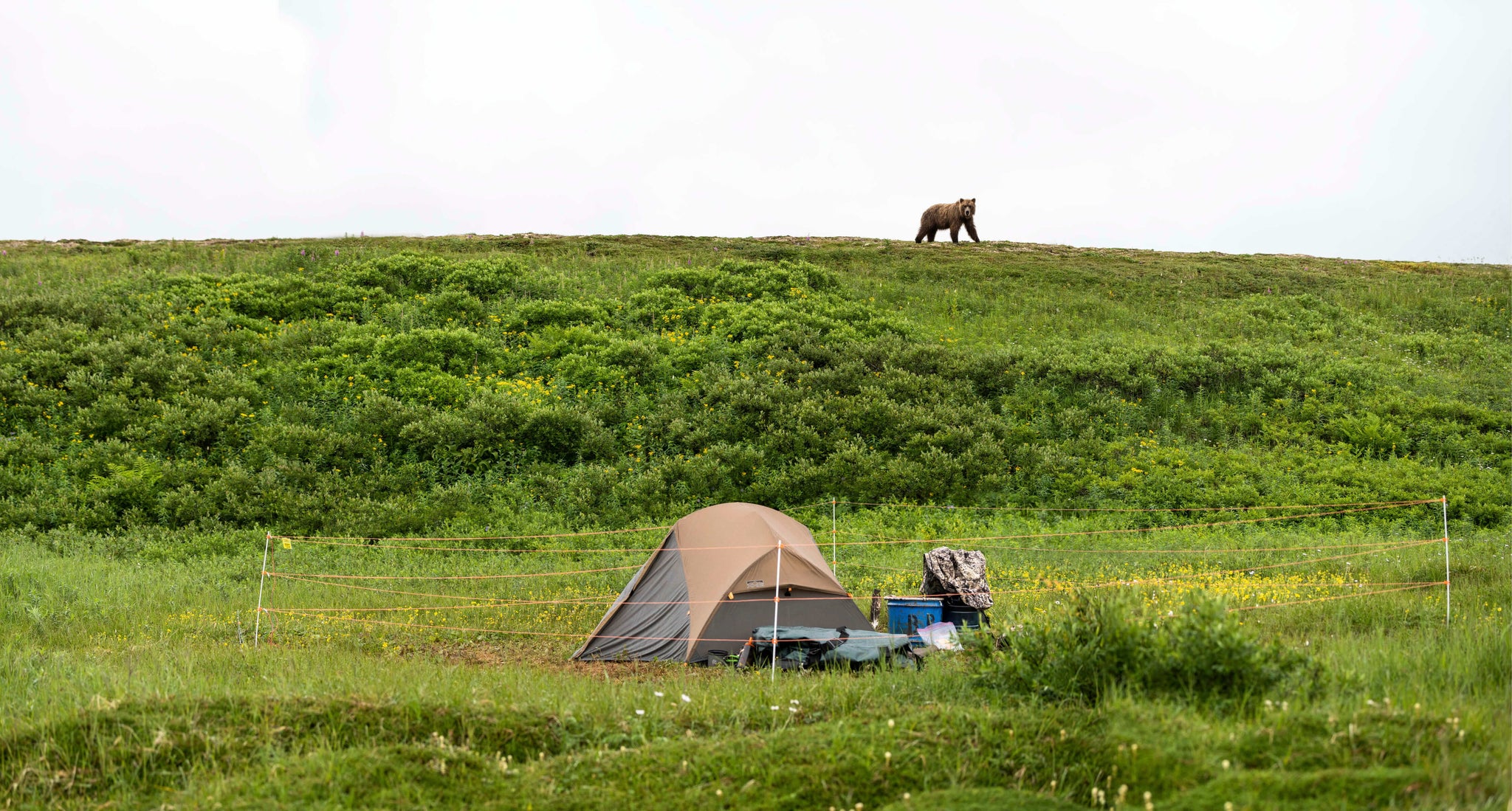
Bearwatch Systems - Electric Bear Fences - Portable and Lightweight
Portable and lightweight electric bear fences designed for camping - Feel safer and sleep better in bear country with a layer of electric deterrence against wildlife.
 bearwatchsystems.com
bearwatchsystems.com
this is what I use while hunting. had a Grizz hit it this fall and the sound that came out of him woke both me and my hunting partner up at 1am. It is long enough to go around my tent as well as the hanging moose and caribou. it puts out 8Kv, and hurts. just ask me how I know
all specs are on the website for weight. I bring along 2x 12V, 7.2Ah batteries with me and leave a solar panel on charge while away from camp. the batteries will last the 2 weeks of hunting. for short stints it runs off of AA batteries, 8 of them? battery life is not great off the AA's but it's easy to setup and with the auxiliary batteries and solar charge there are no issues.
Legend
WKR
- Joined
- Jun 13, 2017
- Messages
- 1,025
Legend
WKR
- Joined
- Jun 13, 2017
- Messages
- 1,025
Both energizer above take 4 D batteries.
I have seen companies claiming high joule output from AA batteries but I have a hard time believing that to be true. I can see if they are hooked up to a large 12v it would but when using AA I bet it is much less.
I have seen companies claiming high joule output from AA batteries but I have a hard time believing that to be true. I can see if they are hooked up to a large 12v it would but when using AA I bet it is much less.
The Sureguard unit I linked uses 2 AA batteries. I've measured it with a fence tester and gotten consistent readings in the mid-7kV range; 9kV would be nice but 7kV is sufficient. This is the same controller that the Kodiak NWR loans out to people for use on Kodiak, for whatever that's worth.
My entire system weighs less than 36oz and includes the following:
- Sureguard controller (w/ 2 batteries installed and 2 spares)
- Beefy aluminum grounding rod
- Six (6) "fence posts" w/ insulators (made from carbon arrow shafts with take-down inserts)
- Enough polywire to enclose a 10'x10' area with 2 strands or a 15'x15' area with one strand
- Plastic winder for polywire
- stuff sack
My entire system weighs less than 36oz and includes the following:
- Sureguard controller (w/ 2 batteries installed and 2 spares)
- Beefy aluminum grounding rod
- Six (6) "fence posts" w/ insulators (made from carbon arrow shafts with take-down inserts)
- Enough polywire to enclose a 10'x10' area with 2 strands or a 15'x15' area with one strand
- Plastic winder for polywire
- stuff sack
rayporter
WKR
too many variables to say how much you can get on a reel. i would guess i have 150 ft on each reel. they get bulky after you use them a few times. probably the most efficient way to pack in is to use a new roll of wire and take empty reels in.
my horses run against a hot wire all year and don't test it for 2 days so i dont use insulators. i just string it through the bushes and trees. if i need to get a wire hot i tie hay string to trees then tie or run the wire through the hay string from tree to tree.
many equines will learn they can go under real quick and not get a hard jolt. string a low wire.
grounds in dry sandy soil are a problem. a little help with some -ahem- moisture can be necessary.
my horses run against a hot wire all year and don't test it for 2 days so i dont use insulators. i just string it through the bushes and trees. if i need to get a wire hot i tie hay string to trees then tie or run the wire through the hay string from tree to tree.
many equines will learn they can go under real quick and not get a hard jolt. string a low wire.
grounds in dry sandy soil are a problem. a little help with some -ahem- moisture can be necessary.
Legend
WKR
- Joined
- Jun 13, 2017
- Messages
- 1,025
Do you run 2 hot wires?The Sureguard unit I linked uses 2 AA batteries. I've measured it with a fence tester and gotten consistent readings in the mid-7kV range; 9kV would be nice but 7kV is sufficient. This is the same controller that the Kodiak NWR loans out to people for use on Kodiak, for whatever that's worth.
My entire system weighs less than 36oz and includes the following:
- Sureguard controller (w/ 2 batteries installed and 2 spares)
- Beefy aluminum grounding rod
- Six (6) "fence posts" w/ insulators (made from carbon arrow shafts with take-down inserts)
- Enough polywire to enclose a 10'x10' area with 2 strands or a 15'x15' area with one strand
- Plastic winder for polywire
- stuff sack
If so your system is counting on enough moisture in the soil to connect the earth back to the unit to close the circuit. This is unlikely unless you are set up on some swampy ground.
You can test it by sticking one end of your volt meter in the ground and then touching one wire. You will most likely be disappointed in the volts.
Hot/ground/hot is the way to go. Or if you want you could run Hot/ground to save weight. Just remember the bear needs to touch both a hot and a ground at the same time. But they will get the FULL onion when they do!
Do you run 2 hot wires?
If so your system is counting on enough moisture in the soil to connect the earth back to the unit to close the circuit. This is unlikely unless you are set up on some swampy ground.
You can test it by sticking one end of your volt meter in the ground and then touching one wire. You will most likely be disappointed in the volts.
Hot/ground/hot is the way to go. Or if you want you could run Hot/ground to save weight. Just remember the bear needs to touch both a hot and a ground at the same time. But they will get the FULL onion when they do!
I understand your comments about wire configuration and testing options.
My wires are all hot. One strand at fox nose height and one strand a bear nose height.
Hot lead on the controller goes to the wire, ground lead on the controller goes to the grounding rod.
My fence system grounding rod is oversized and my soil is always damp (Alaska).
I am testing with a purpose made fence tester that has its own grounding rod. I have tested this system with different grounding rods and different soil types and consistently get mid-7kV readings.
Yes, 9vK would be ideal, but for a total package weight of 36 oz, I'm happy. A fox isn't going to hit two wires at once (hot/ground system). Bears and foxes investigate stuff with their noses. That's when I want them to get hit, not when they're trying to push their way through the fence with their bodies (contacting both wire in a hot/ground system).
Legend
WKR
- Joined
- Jun 13, 2017
- Messages
- 1,025
Sounds like you have a good understanding. And if it works for you run it.I understand your comments about wire configuration and testing options.
My wires are all hot. One strand at fox nose height and one strand a bear nose height.
Hot lead on the controller goes to the wire, ground lead on the controller goes to the grounding rod.
My fence system grounding rod is oversized and my soil is always damp (Alaska).
I am testing with a purpose made fence tester that has its own grounding rod. I have tested this system with different grounding rods and different soil types and consistently get mid-7kV readings.
Yes, 9vK would be ideal, but for a total package weight of 36 oz, I'm happy. A fox isn't going to hit two wires at once (hot/ground system). Bears and foxes investigate stuff with their noses. That's when I want them to get hit, not when they're trying to push their way through the fence with their bodies (contacting both wire in a hot/ground system).
In Montana that setup would not work unless you camped in a very wet meadow.
Similar threads
- Replies
- 29
- Views
- 4K
- Replies
- 0
- Views
- 757
- Replies
- 12
- Views
- 2K
Featured Video
Stats
Latest Articles
-
TT#48 Everything Argali with Brad Brooks
-
Argali Yukon 8P Tent Review
-
The Evolution of a Buck Hunter–with Marc Smith
-
Old Mule Deer, Rut Wrap, Better Venison & the Blacktail Deer Foundation
-
Bergara MgMicro Lite Rifle Review
-
TT#47 Draw Strategies with Robert Hanneman
-
Ultralight Tripods, Tested and Reviewed
-
Bowhunting Accuracy: Arrow Speed vs. Weight
-
Net-Gunning for Big Mule Deer
-
Tricer JC and Tricer BP Review

